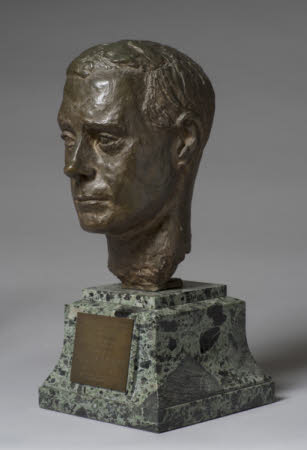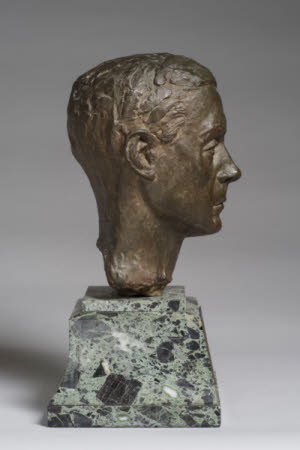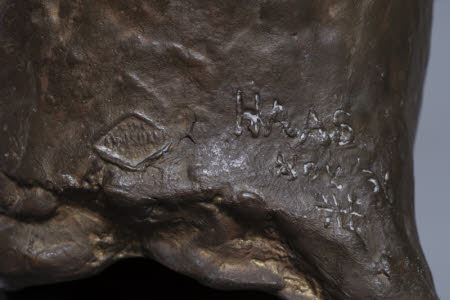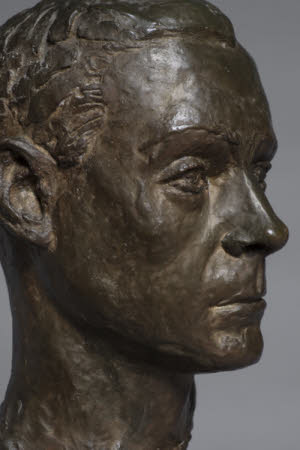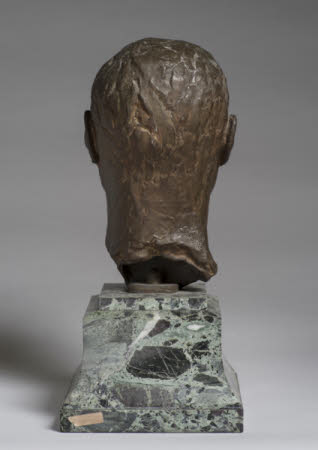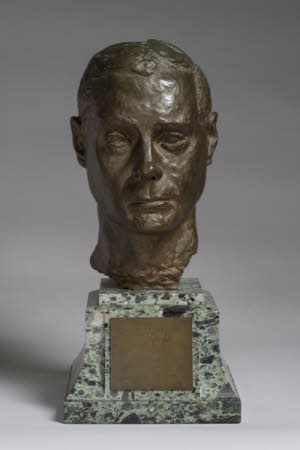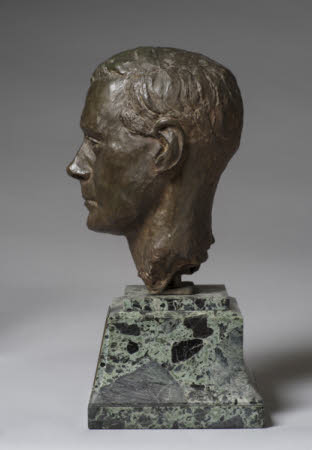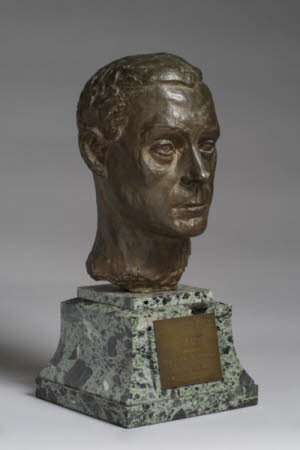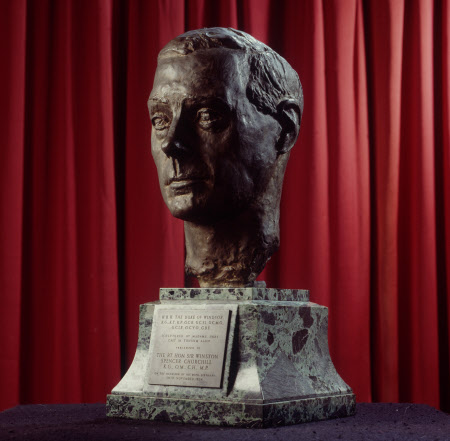Edward VIII, Duke of Windsor (1894-1972)
Clara Haas (b.New York City 1895 - 1996)
Category
Art / Sculpture
Date
c. 1954
Materials
Tungum alloy
Measurements
285 mm (Height)
Order this imageCollection
Chartwell, Kent
NT 1101915
Summary
Tungum alloy, Edward VIII, Duke of Windsor (1894-1972) by Clara Haas (b. New York City 1895). Head on green marble plinth with bronze presentation plaque inscribed 'H.R.H. THE DUKE OF WINDSOR/ K.G., K.T., K.P., G.C.B., G.C.S.I., G.C.M.G., G.C.I.E., G.C.V.O., G.B.E./ SCULPTURED BY MADAME HAAS/ CAST IN TUNGUM ALLOY/ PRESENTED TO/ THE RT HON. SIR WINSTON/ SPENCER CHURCHILL/ K.G., O.M., C.H., M.P./ ON THE OCCASION OF HIS 80TH. BIRTHDAY./ 30TH. NOVEMBER 1954.'
Full description
Letter from a member of the public July 22nd 2022: The documents he attached indicate that there were in fact two busts of Edward VIII made. Both were cast in November 1936 by A Valsuani, a famous foundry. It was probably Attilo Valsuani who managed the foundry for a limited time with his older brother Marcel after their father Claude died in 1923. Both were cast in Tungum Alloy using a method called Cire Perdue or the lost wax process. The artist was an American called Clara Hass, who was born in New York in 1895. It appears using Tungum Alloy in this fashion was quite unusual and possibly even unique. The material was developed between 1930-32 by Richard Ayshford Sanford and Mr Tungay – hence the name. Tungum Alloy is a complex Alfa brass, very strong and non-corrosive. Tungum had largely been used on aircraft for hydraulic, air and fuel lines. It was key component in the Spitfire and Hurricane fighters. It was also used on yachts and minesweepers as it is non-magnetic. Marcello Valsuani emigrated from Italy to France working as a technical director at the Hébrard foundry in 1902. Returning to Italy before the start of World War One, his son Claude established a foundry in Paris and Claude specialise din the lost wax process (cire perdue). He was one of the first founders to number his casts, usually a maximum of 10. Marcel, his son, succeeded him after his death in 1923 using the cachet ‘C. Valsuani’. The firm worked for a number of famous artists including Matisse, Renoir and Daumier among many others.
Marks and inscriptions
inscription on plaque
Makers and roles
Clara Haas (b.New York City 1895 - 1996), sculptor
